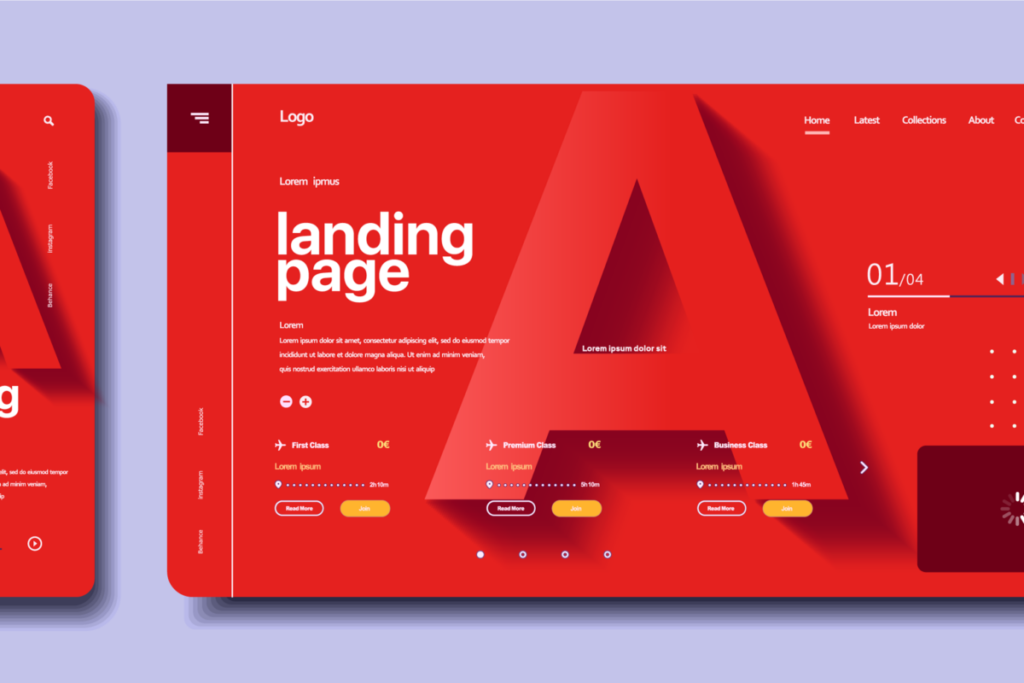
THE INCREASING RELEVANCE OF RESPONSIVE WEB DESIGN
In the technologically advanced world we inhabit, having a responsive website has transitioned from being an optional extra to an absolute requirement. Responsive web design’s importance lies in its ability to optimize a site’s appearance and performance across a range of devices, from desktops to smartphones. This ensures your website is not just visually pleasing, but functionally efficient across all platforms.
ENHANCING USER EXPERIENCE THROUGH RESPONSIVENESS: REAL-LIFE APPLICATIONS
The key to a responsive website’s power is its ability to deliver an uninterrupted, enjoyable user experience, irrespective of the device being used. Consider the example of Airbnb; when the global accommodation giant overhauled its website design into a responsive format, they reported a notable upturn in bookings and user engagement rates.
The essence of a responsive design is its automatic adjustment to the screen size of the user’s device. This ensures that the website’s content remains consistently easy to navigate and read. As the website adapts to the device’s display size, it enhances user satisfaction and fosters increased engagement rates.
THE POWER OF DATA: RISING MOBILE USAGE AND ITS IMPACT
The rise in mobile usage over recent years has been exponential. Recent data from Statista highlights that as of 2023, nearly 73% of internet users access the web via their mobile devices. Interestingly, this surge isn’t limited to browsing; a dramatic shift in shopping habits has also been observed. Shopify, a leading eCommerce platform, reported that 81% of its traffic came from mobile devices in 2022, further emphasizing the need for a responsive web design catering to the needs of mobile users.
RESPONSIVENESS AND SEO: A SYMBIOTIC RELATIONSHIP
More than just an enhanced user interface, responsiveness plays a pivotal role in search engine optimization (SEO). Search engines like Google show a distinct preference for mobile-friendly sites when generating search results. The advent of Google’s mobile-first indexing in 2018 signifies the importance of having a responsive website. With this change, Google primarily uses a site’s mobile version for indexing and ranking, reinforcing the idea that responsiveness could significantly enhance search engine rankings and visibility.
BLUEPRINT FOR A RESPONSIVE WEBSITE
Building a responsive website is a carefully coordinated process involving flexible grids and images, using CSS media queries, and performing rigorous testing across multiple devices. These elements work together to ensure your website scales appropriately and functions correctly on diverse devices. This process, while intricate, emphasizes the need for thoughtful design and meticulous development strategies.
EXPERT INSIGHTS ON RESPONSIVE DESIGN
Noted experts in the field also underscore the importance of responsive design. Webmaster Trends Analyst at Google, John Mueller, once emphasized, “Responsive design is a fantastic way to support mobile users, as it offers the same content found on desktop versions, but in a functional way that works for smaller mobile screens.”
FUTURE TRENDS IN RESPONSIVENESS
As we peer into the future, the trend towards mobile browsing and shopping seems unshakeable, implying an ongoing and increasing need for responsive websites. As technology continues to evolve, websites may find new ways to adapt to users’ needs, including personalizing content based on users’ device types or adapting to emerging technologies such as wearable devices.
FINAL THOUGHTS: THE COMPELLING IMPORTANCE OF RESPONSIVE WEB DESIGN
To wrap up, the significance of responsiveness in web design is far-reaching. By enhancing user experience across all devices and supercharging your SEO efforts, a responsive website can dramatically boost your online presence. As we continue our journey into the mobile-first era, responsiveness isn’t just a best practice—it’s an integral part of any effective web design strategy. With its unrivaled benefits, responsiveness will continue to shape the digital landscape for years to come.
A SNAPSHOT OF THE EVOLUTION OF MOBILE WEB USAGE
To underscore the rapid growth of mobile web usage, let’s take a quick look at a timeline showing the evolution of mobile website use:
- 2007: Apple introduced the first iPhone, marking the advent of modern smartphones.
- 2010: Mobile web browsing accounted for less than 5% of global internet traffic.
- 2015: Mobile web browsing overtook desktop browsing for the first time, accounting for approximately 51% of global internet traffic.
- 2018: Google introduced mobile-first indexing, emphasizing the importance of mobile-friendly websites.
- 2023: Nearly 73% of internet users access the web via their mobile devices.
This timeline reinforces the accelerating trend of mobile web usage, underlining the importance of responsive web design in today’s digital landscape.











